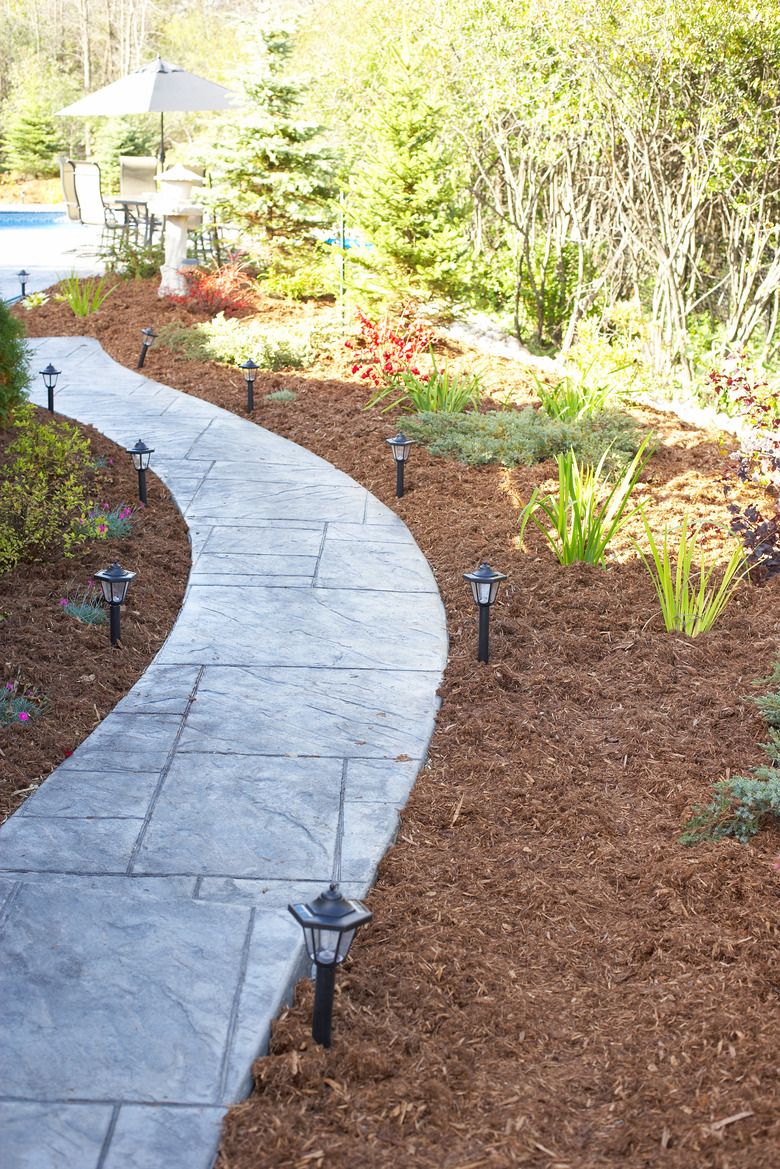Brown Vs. Black Mulch
Mulch is a natural material that is beneficial to plants and landscaping. Mulch can be dyed to be brown or black in color, though mulch also can be naturally brown in color. When deciding between black mulch and brown mulch, take into consideration the fading, cost, coverage and appearance of each product before making a selection.
Mulch
Mulch
Both black and brown mulch are dyed to achieve vivid shades of each color. Some natural mulches that are not dyed may exist in shades of brown. Mulch is defined as any type of material that can be layered around plants for visual landscaping improvement or for protection of the surface around the plant. Organic materials that can be used in mulch include leaves, needles, twigs, flower blossoms and bark.
Fading
Fading
Regular mulch turns a shade of gray as it fades in the sun. In fact, in as little as one to two months, regular, non-dyed brown mulch can become gray. Meanwhile, dyed brown mulches or black mulches can last for a minimum of a year, and in some products longer with little color loss. This makes dyed mulches, either black or brown, more desirable than natural mulches.
Cost
Cost
The cost difference between brown dyed mulch and black dyed mulch is insignificant and in many cases, non-existent. Many companies offer mulch in various colors, all for the same price. For example, a bag of premium brown dyed mulch that covers 2 square cubic feet costs around $2 at Lowes, as of publication. A bag of the exact same product, but dyed black, costs the exact same price. Different manufacturers may set different prices, which means not all products will cost around the same price.
Coverage
Coverage
No matter what color, bags of mulch are sold in cubic feet. Meaning, each bag covers a specific amount of cubic feet. A common cubic footage is 2wo feet, but larger and smaller sizes also exist. Mulches of either color can also be found in bulk through landscaping companies and major home improvement retailers.
Appearance
Appearance
Both black mulch and brown mulch can look natural in landscaping. The soil in various areas of the United States varies in color; some areas feature chocolate brown coloring while others feature rich, dark almost black soil. Due to this, if you are looking for a natural color, choose mulch that most closely matches the natural soil. Both brown and black mulch can allow plants to pop out against the landscaping.
